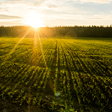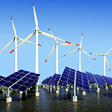- Home >
- Our Actions >
- Ambassador report
3
Comments
Food Choices |
|---|
|
by Bwalya Bwalya | 26-09-2019 19:17
|
|
ABSTRACT
What we eat matters. The food choices we make every day have a big effect on the environment. Our food choices cause environmental problems at all levels. The good news is that even small changes in what we buy and eat can add up to real environmental benefits, including fewer toxic chemical reduced global warming emissions, and preservation on our resources. Eating local goods, green foodstuffs can also mean eating fresher, healthier foods leads to achievement of strong sustainability as well as supporting our farmers INTRODUCTION Our food choices have observable impacts and sustainability on the environment. The relationship between our food choices and impacts on the environment is intertwined. What you choose to put on your plate can make the most powerful impact on your personal environmental footprint. At least three times a day you make choices on how to calm your growling belly and stoke your body with fuel, these choices can create a lighter impact on mother earth, or a heavier one. Sustainability does not only require choosing food we eat by considering the nutritional value but by also putting into account its environmental impact. The aim of the essay is to explain the relationship of our food choices and its impact on the environment and ways of achieving strong sustainability. DEFINITION OF KEY CONCEPTS Strong sustainability is a phenomenon that puts emphasis on ecological scale over economic gains. This implies that nature has a right to exists and that it has been borrowed and should be passed on from one generation to the next intact in its original form. On the other hand, meal choices refer to how people decide on what to buy and eat. This is usually in correspondence to personal preferences. THE RELATIONSHIP OF OUR FOOD CHOICES AND THEIR IMPACTS ON THE ENVIRONMENT. The relationship between our food choices and the environment is complex and intertwined. The food choices we make have impacts in one way or the other. For example, we tend to like to like more highly processed food which uses a lot of energy during production. This cause negative effects on our environment because more energy released leads to environmental problems. That’s why our activity, focused much on local foods that are natural such as vegetables, butter nuts, soya chunks, tomatoes and onion to mention a few. On the other side, focusing much on imported foods questions our sustainability because during transportation more fossil fuels is released due to longer distances travelled. Our food choices lead to environment degradation. Humans have made unprecedented changes to ecosystems in recent decades to meet growing demands for food, fresh water, fiber, and energy These changes have helped to improve the lives of billions, but at the same time they weakened nature’s ability to deliver other key services such as purification of air and water, protection from disasters, and the provision of medicines · Among the outstanding problems identified are the dire state of many of the world’s fish stocks; the intense vulnerability of people living in dry regions to the loss of ecosystem services, including water supply; and the growing threat to ecosystems from climate change and nutrient pollution · Human activities and food choices have taken the planet to the edge of a massive wave of species extinctions, further threatening our own well-being The pressures on ecosystems will increase globally in coming decades unless human attitudes and actions change. Producing the food we eat has massive environmental impacts. It requires vast tracts of land and huge quantities of water. In addition to using land and water, food production results in greenhouse gas emissions from the fossil fuels burned to run tractors and harvesters, for example, and from the gases released when cow manure decomposes and from when cows burp. These emissions add up Green House Gases e.g. Methane. Scientists estimate that food production around the world causes up to 30% of all the greenhouse gases people release to the atmosphere each year. Raising cows and sheep for meat has an especially large environmental footprint with regards to land use, water use, and greenhouse gas emissions. The impacts of food choices on the environmental is observable and complex as stated earlier. Many facts including farming methods, where food is grown, what pesticides and fertilizer are used, what’s fed to our livestock and so on affect the environmental impact of the food we buy and eat. For instance, fertilizers and other pesticides enters local streams that eventually empty into the aquatic environment. Adding nutrients stimulates excess growth of phytoplankton (algae) that subsequently then die and sink to become available for bacteria to decompose in bottoms waters. As bacteria decompose the dead phytoplankton, they also consume oxygen. Consequently, increasing nutrient additions indirectly leads to increases oxygen consumption by the bacteria until most or even all of the oxygen is removed from the water. With little or no oxygen in the water there can be no fish, no shrimp, marine mammals or marine life of any sort that needs oxygen to live. This will result in reduction or death of aquatic organism. Different food choices lead to water air pollution, loss of wildlife, increasing land use and loss of habitats which results from food production. For example, if we change our food choices us customers, the producers will change and adapt new ways of meeting our demand and supply. This will lead to expansion of their production industries, using of chemicals and other substances to meet our demand hence leading to environmental problems. WAYS ON HOW OUR MEAL CHOICES HELP TO ACHIEVE STRONG SUSTAINABILITY Prioritize plants Shifting to a more plant-based way of eating will help reduce freshwater withdrawals and deforestation. A win-win for both our personal health and the environment. The Healthy Eating Plate suggests filling half your plate with vegetables and fruits as part of an optimal diet, but planning our meals around produce benefits the planet as well. This way our environment will be sustained properly. The health eating also helps us to reduce global warming which lead to different distribution or break out of illnesses. On the other hand, reduced packaged products. The packages such as cereal boxes can make a huge impact on sustainability, as packaging fills up landfills. Select minimally processed whole foods with little packaging as your best bet. After all, a banana and a sweet potato have natural packaging. Avoid highly processed foods. If a food product has been through many steps in manufacturing, with lots of ingredients coming from all corners of the world, the carbon footprint is higher for that product, due to traveling, manufacturing and distribution. Think a nutrition bar with a long list of ingredients or a handful of nuts which came from one source with minimal processing. In order to have a very low ecological footprint, sustainable food choices such as eating lower on the food chain can be exercised. More fruits, vegetables, and grains, and less red meat. Choosing local or sustainable fish and seafood that is lower on the food chain is also a good alternative. Processing of foods leads to a lot of pollution emissions which surpass the environments carrying capacity hence, looking for fresh foods with the fewest processing steps can reduce our footprints. Choose nutritious foods These are more sustainable because they use resources such as water, farm inputs, soils wisely to produce foods that contribute to good health. These foods include whole grains, vegetables, fruit, pulses, nuts and seeds. However, using these precious resources to produce foods with poor nutritional quality is not sustainable for example, soda, chips and candy because you squander resources that could have been used to produce foods that nourish the body. For example, locally grown food ensures higher nutritional values when compared to imported produce that has suffered from lengthy transport times. During the journey, nutrients locked into goods vanishes with each passing minute until the food displayed on supermarket shelves has lost over half of their nutritional value compared when they were picked. Furthermore, produce that has been transported overnight to nearby superstores or is sold from local farmer’s market is usually displayed at the peak of its ripeness. This freshness not only invariably tastes better but is also healthier. Therefore, there is greater transparency of how food is produced when it comes to locally produced food stuff as compared to imported food stuff. Minimize meat consumption The healthy eating plate already suggests reducing red meat and now there’s another reason to treat it more as a condiment than a main dish. Meat production is a substantial contributor to greenhouse gas emissions. Beef production especially, and the environmental burden deepens as raising and transporting livestock also requires more food, water land and energy than plants. To eat for our own health as well as that of the planet, we should consider picking non-meat proteins for example nuts and legumes. A diet with an excessive consumption of meat is rich in fat and cholesterol and may be responsible for health problems such as obesity, diabetes and cardiovascular disorders. Not only that, this is a diet that has serious repercussions on the environment, because to produce just one kilo of meat 15,400 liters of water is required. Recently the relationship between livestock and sustainability has begun to attract attention. Livestock contributed more to global greenhouse gas emissions than transport. This is the type of production that needs to be questioned in a world where resources are running low. On the contrary a diet with a wide variety of fruits and vegetables is beneficial for both human health and the health of the environment thereby supporting strong sustainability. Look local products Exploring farmers markets helps you find fresh produce grown locally, but equally important, you can meet the people who produce your food. Such relationships are opportunities for education because you can learn how your food was grown, when it was harvested and even how to prepare it. Locally grown food creates important economic opportunities, it provides health benefits and helps to reduce environmental impacts unlike other food that are imported and modified whose impacts of pollution and contamination is unpredictable. In addition, locally grown food is often pesticides free, meaning it has less impact on the environment because many local food producers choose to use organic and natural repellants to preserve the health of the environment and the food distributed. While food produced from large scale agriculture are often mass sprayed with pesticides. Organic food regulations significantly limit the synthetic pesticides that can be used in crop production, and they support more sustainable soil practices, such as the use of cover crops, composting and manures. Due to selection of food, the activity helped us to be more concerned about food production practice and their impact a growing population on the earth’s resources in a way that we choose to prepare a sustainable meal by using local food because local food is the food that is natural, organic, sustainable and it is considered to have less impacts on the environment compared to imported food hence leading to strong sustainability. In conclusion, as we pointed out above, the relationship between food and the environment can sometimes be complex because food is accessed, produced and grown differently. Finding out where your food comes from, and investigating how it’s grown, can be a useful way of learning about the food system in your area and understanding its impacts on the environment. lastly, it’s possible and simple to attain sustainability by adopting and following sustainable ways such as prioritize foods, avoid highly processed food, minimizing meat consumption, choose nutritious food and buy local foods or products to achieve strong sustainability as stated. |
|
|










 Previous : World Environmental Health Day...
Previous : World Environmental Health Day...









3 Comments
Hello Bwalya
I do hope that you are fine and doing great with your works.
Thank you for your report about Food Choices
Green Cheers from Nepal :)
Keep writing great reports.
We are eager to read more reports from you.
Regards,
Kushal Naharki
Posted 04-10-2019 18:28
Thank you for the great article.
Keep writing and shining
Posted 03-10-2019 15:31
Hello Bwalya!
You described well about the relationship between the food and environment. Food is one of the main ways humans interact with the environment. It is a very primeval way of interacting, so it can have huge impact, but at the same time easy to be forgotten.
Of the much information you mentioned, I was really interested about the harmfulness of eating meat. I kind of knew that some of its nutrition are not so good, but I didn't know how much water is required to produce a kilo of meat. Knowing that, it will probably make me think one more time before eating steak.
Thank you for the great report!
Posted 30-09-2019 14:46